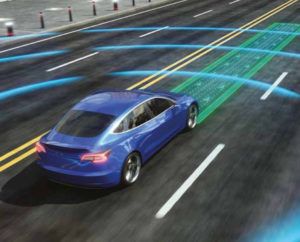The UK Government-backed organization Zenzic (formerly Meridian) has launched the world’s first self-driving roadmap to clearly show the connections, cross-sector interdependencies and collaboration required to get self-driving vehicles on the country’s roads in significant numbers by 2030.
Zenzic was set up by government and industry to coordinate a national platform for testing and developing connected and autonomous vehicles (CAVs) in the UK, and channels £200m (US$277m) in investment into the country’s self-driving ecosystem. Created with input from over 150 organizations across government, industry and academia during six months of interactive workshops, interviews and research, Zenzic’s new ‘UK Connected and Automated Mobility Roadmap to 2030’ is based on four key themes: Society and People, Vehicles, Infrastructure and Services. It also identifies six Golden Threads that show areas dependent on cross-industry collaboration and parallel developments to achieve the goal of self-driving services being accessible to the public by 2030.
 Key insights from the roadmap include:
Key insights from the roadmap include:
- Collaboration – If all the activity in the roadmap was scheduled sequentially with no parallel efforts, it would take until 2079 for the UK to benefit from self-driving vehicles on the roads. Cooperation between industry, academia and government is the key to achieving the benefits of CAV;
- Legislation – Of the 500+ milestones in the roadmap, regulations, standards and legislation are the most critical enablers for the development, trialing and deployment of CAV technologies and services. These include a consistent framework for the approval and licensing of self-driving vehicles, agreed safety standards, and the creation of a digital ‘Highway Code’;
- Safety- The majority of road incidents currently involve human error. By using automation to remove humans from the task of driving, organizations harness the ability to vastly reduce the number of serious collisions. The number one factor in achieving public acceptability is a clear and transparent approach to safety;
- Society – To date, a vehicle-centric focus has been adopted to progress self-driving technology. By thinking about how technology and services will benefit society at large in 2030, the UK is better placed to unlock the full value of CAV. Through the sharing of data, CAVs will contribute to more efficient use of the roads, improve safety and offer more inclusive transport options to more people. This will benefit not only society but also the economy;
- Cyber security – With the UK at the forefront of cyber security technology, and half of the roadmap dependent on it, the country has an opportunity to use homegrown solutions to progress CAM capabilities and lead the way globally;
- 2025 ‘tipping point’ – The roadmap predicts 2025 will be the exciting moment the UK switches gears from trial and development of the technology to the scaling up of its deployment. After this point, thanks to advances in vehicle licensing, vehicle insurance and a tidal change in desirability in the public eye, the authors expect to see more commercial passenger services emerging.

“We believe this tool is the competitive advantage we need to be a world leader in CAV,” explained Zenzic’s CEO, Daniel Ruiz. The roadmap will not only enable those involved to maximise the return on their investments in time and money, but also streamline the creation of targeted strategies to deliver significant social and economic benefits for the UK.”





